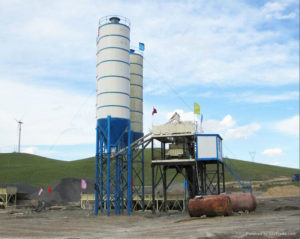A customer recently told us they asked an industry professional to visit their ready mix concrete plant to evaluate their plant. They needed to get a little more production but didn’t really want to invest in a new concrete plant. The person visited and advised them their concrete plant was old and needed to be replaced. In reality, this is not even remotely accurate. A concrete plant doesn’t know how old it is and therefor for its speed is not connected to its age.

Older plants may not have the capability of producing the high volume of modern concrete plants for a variety of reasons, but if you are only looking for a little extra volume each hour or two you may be able to make your current concrete plant operate more efficiently and achieve your goal.
First, you need to consider and evaluate each of the material handling systems in your concrete plant separately. Cement, fly-ash, aggregate weigh, water weigh, etc. Using a stopwatch; time how long each process takes. You may find that one or more processes slows your whole plants production down. In some cases you may be able to modify that particular process to increase your production. For example if water is your slowest system the addition of holding tank may improve your total production.
After you have carefully timed multiple cycles of each of your concrete plants functions, you need to determine what the maximum capacity and discharge of each of your systems is. If you are fortunate enough to have an engineer on staff, they will be able to easily get some measurements and calculate this information. If you do not have access to an engineer most reputable equipment dealers can help you make these calculations for low or no cost. You will need to provide some basic information which typically includes conveyor belt width, length and motor sizing; auger diameter and motor sizing, butterfly valve sizing, plumbing pipe diameter and pressure; etc.
It is a common occurrence for conveyor belts to be operating at partial capacity to compensate for overfilling of trucks or other problems with the plant. The same is true for cement augers and even feed systems. Often time these pieces of equipment are slowed by reducing the feed, sheeve or even motor size as a way of remedying another problem. Obviously, once you bring all of your systems back to full capacity you are likely to be left with the original problem which can hopefully be remedied for a lower cost than that of a new concrete plant.